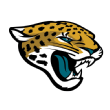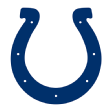When the Los Angeles Rams fired Jeff Fisher on Monday afternoon, it lit the pilot light under the hot stove of coaching changes around the NFL. Fisher was the first and to this point the only head coach to be relieved of his duties this season, a list that will surely grow once the season ends. There's no fun in speculating on future firings, but the coaching cycle is an inescapable reality of football.
Let's think about this in a different way. Instead of speculating on the coaches who are likely to be unemployed soon, let's focus on the jobs and the opportunities that might be available shortly.
I'm not suggesting that these coaches are going to be leaving or deserve to lose their jobs, but I am analyzing all of the potential head-coaching openings that have been the subject of public scrutiny at different points during this season. Let's sort through them from least enticing to most promising, independent of their chances of becoming available. And that begins with an organization that should be very familiar with the hiring process by now ...

10. San Francisco 49ers
Regardless of whether the 49ers keep Chip Kelly, this roster is unrecognizable from the one that likely would have won a vote as the league's best in 2013. Even the players who are left -- guys such as linebackers NaVorro Bowman and Michael Wilhoite and quarterback Colin Kaepernick -- haven't looked like themselves, as they've battled injuries and age. This is a mess of an organization, from top to bottom.
It's far more likely that the 49ers would fire general manager Trent Baalke before making any decision on Kelly, but in either scenario, the roster is years away from being competitive. Kaepernick has been an upgrade over Blaine Gabbert, but he's still struggling to correct his issues with pocket presence and accuracy and is likely to leave during the offseason. The 49ers are likely to finish the year with a top-three pick, but it has come during a year when there doesn't appear to be a quarterback worth taking. Todd McShay's first mock draft doesn't include any quarterbacks before the 30th selection.
And the 49ers aren't going to be stocked with draft capital in 2017, either. They'll have an extra fourth-round pick because of Alex Boone's departure and a couple of late-round selections, but they'll have nothing else to help restock the roster.
New management would have a scarcely fathomable amount of cap space to work with -- the Niners could easily roll into March with more than $100 million of room -- but who wants to play there? It would take a remarkable long-term effort to reshape the organizational culture in San Francisco, and whichever coach intends to do so would be joining an organization hiring its fourth head coach in four years. Does that sound appealing?

9. Los Angeles Rams
It has been suggested that the Rams vacancy is viewed as a desirable gig by those in the league. Maybe it's just me, but this gig doesn't seem very exciting at all. Let's run through the checklist of things you might want if you were going to take over a rebuilding football team.
A franchise quarterback? The Rams drafted Jared Goff with the first overall pick in April, but Goff wasn't good enough to get on the field for most of his rookie season and has posted a brutal 24.5 QBR since getting there. It's too early to give up on Goff, but the initial returns are about as ugly as it gets for a No. 1 pick. Whoever takes over this job is going to inherit Goff as the quarterback of the future with three years and $22.8 million in guaranteed cap hits remaining.
Draft picks? Goff was the only player taken by the Rams in the first three rounds of the 2016 draft, and the Rams are down first- and third-round selections in the 2017 draft after trading them to Tennessee as part of the deal to move up and grab him. (The Titans used two of the picks they acquired from the Rams to trade up and draft right tackle Jack Conklin, who has played at a Pro Bowl level as a rookie.) The Rams likely will gain third-, fourth- and sixth-round picks as part of the compensatory process, but they've given away what are likely to become the fifth and 97th picks of the draft. Those are worth a combined 29.8 points of value on the Chase Stuart draft value chart. Los Angeles' other picks will be worth somewhere around 32.7 points of draft capital, meaning that nearly half of their draft capital in 2017 will head to Tennessee.
Cap space? For now. The Rams have $47 million in space available for 2017, but that's without deals for top cornerback Trumaine Johnson -- who is playing out 2016 on a franchise tag -- underrated safety T.J. McDonald or starting wideout Kenny Britt, all of whom would be unrestricted free agents. Linebacker Alec Ogletree will be entering the fifth and final year of his rookie deal. Also, 2017 is the fourth year of defensive tackle Aaron Donald's rookie deal, which surely will include a fifth-year option for 2018. The Rams will owe Donald a mammoth extension in the near future, one that might make him the highest-paid defender in football.
Furthermore, several Rams starters have regrettable contracts. Wide receiver Tavon Austin's four-year, $42 million deal looks like the classic case of an organization paying a player for who they wanted him to be instead of who he is, although the Rams can get out of his deal after 2017. The same is true for linebacker Mark Barron. Former second overall pick Greg Robinson, a healthy scratch at offensive tackle earlier this season, is locked up for one more year at $6.7 million in guarantees.
There are precious few players on the team who are locked up for multiple seasons at below-market salaries given their established level of play. Todd Gurley, who was supposed to be the focal point of the Rams' offense, is averaging 3.3 yards per carry with zero runs of 25 yards or more in 227 attempts. That's the seventh-worst rushing average since 2000 for a player with 200 carries or more.
The best arguments for the Rams job, as far as I can tell, are that owner Stan Kroenke showed a remarkable amount of patience with Fisher, likely will be willing to spend money, and has moved his team to a desirable market in Los Angeles. Does the latter really mean all that much? Teams around the NFL generally have no trouble retaining the players they want to keep. And if a team is planning on leveraging its high-profile location to spend in free agency, it's already playing a sucker's game when it comes to the NFL. The Dolphins have tried that tactic; how has it worked out for them?
The Rams aren't hopeless. If the new head coach can turn Goff into a competent starter, he'll have an extremely valuable asset to go along with Donald, who is one of the most underpaid players in football. They have enjoyed excellent special teams under interim head coach John Fassel, with punter Johnny Hekker worth twice as much in field position as anybody else this season. It's also likely that Los Angeles' new coach will need to spend 2017 evaluating the mistakes of the old regime before beginning to steer the ship out of the skid in 2018. That alone makes the Rams job relatively unappealing.

8. New York Jets
Years of bad drafts have left the Jets relying heavily on veteran free agents and trade acquisitions, and while that strategy worked during a surprisingly impressive 2015, Gang Green has fallen on its face this season. Unless Todd Bowles impresses over the final few weeks of the season, it seems like he'll be done after two years in New York, one of which was a 10-6 campaign with Ryan Fitzpatrick at quarterback. Given the quick hooks for Bowles and, before his time, general manager John Idzik, this wouldn't be an appealing job.
After Idzik cleaned up the Jets' cap during his time at the helm, general manager Mike Maccagnan went on a spending spree during the 2015 and 2016 offseasons. Many of those moves look like mistakes, and the Jets already have $165.1 million committed to the cap next season before even thinking about what they might do at quarterback, where they'll owe Fitzpatrick $5 million regardless of whether he stays on the roster.
The Jets can clear out cap space by releasing veterans, but there aren't any replacements behind those vets on the roster. Releasing Darrelle Revis, Ryan Clady, Nick Mangold, Breno Giacomini and David Harris would create more than $39 million in cap room, but the Jets would need to rebuild most of their offensive line and find a starting-caliber cornerback in a market where even decent corners are approaching $10 million per season.
Since drafting Mangold and D'Brickashaw Ferguson in the first round of the 2006 draft, the Jets have used just one pick in the first two rounds on an offensive lineman, taking departed guard Vladimir Ducasse in the second round of the 2010 draft. Their line is a mess and likely requires a level of rebuild comparable to what the Raiders or Lions have done, but that's going to take time, and it's not clear the new guy can count on much of that once he joins the Jets organization.

7. Chicago Bears
If the Bears fire John Fox, he'll leave an underrated defense behind. The Bears are 18th in DVOA (defense-adjusted value over average) on that side of the ball this year and 14th in weighted DVOA, suggesting that they've gotten better as the year has gone on. The offense has been shredded by injuries; during Sunday's narrow loss to the Lions, it was missing eight players who would have been expected to start this season. This wasn't expected to be a great unit even with everyone healthy, but a lot of offenses would look worse if you took eight training-camp starters out of the lineup.
The good news for the Bears' new head coach: There's cap space! Oh, is there cap space! The Bears will roll over several million dollars from this year, and once they release quarterback Jay Cutler and free up an additional $14 million, Chicago could have $80 million to spend this offseason. Its one pending free agent of note is star wideout Alshon Jeffery, who has had a frustrating season amid a four-game suspension for performance-enhancing drugs. The Bears might be able to leverage that campaign into a cheaper long-term contract, but they also can just choose to franchise Jeffery again, given their cap room and lack of other candidates for the position.
It's hard to figure out how much more the Bears have to work with because their offensive and defensive infrastructure was destroyed by those injuries. Matt Barkley has been surprisingly effective as a passer through three starts, posting a 44.9 QBR amid a 10.6 percent drop rate from a group of backup receivers, but he also has gone up against pass defenses ranked 25th (Tennessee), 29th (San Francisco) and 30th (Detroit) in DVOA. The first time he'll start against an above-average pass defense is Week 17, when Barkley takes on the Vikings. Barkley has earned a spot on next year's roster, but it would be naive to suggest he has done much more at this point.
In addition to needing a new quarterback, years of poor drafting have left the Bears with precious little depth. There are a total of four players left on the roster from the 2010-13 drafts, only one of whom (Jeffery) is a starter. Their top three picks from the 2014 draft are all on injured reserve, and two of their top three picks from 2015 have joined them, with lone holdover nose tackle Eddie Goldman having missed seven games already this season. There may be a useful core here, but it's almost impossible to evaluate until they actually all make it back onto the field.

6. Buffalo Bills
The Bills perennially have been on the verge of a playoff berth without ever breaking through. Losing to the Steelers at home on Sunday likely sunk their playoff hopes -- FPI gives them just a 2.1 percent chance of making the postseason -- but their run-in includes games against the Dolphins, Browns and Jets, making it likely that Buffalo performs just well enough for Rex Ryan to keep his job.
The toughest decision the Bills face at the moment, quite clearly, is what to do with quarterback Tyrod Taylor. Buffalo signed Taylor to a five-year, $90 million extension in August that was really a down payment of $9.5 million and the option to execute a five-year, $82.5 million deal with no immediate skill guarantees starting in 2017. The Bills have to make their decision on that deal before March 11; if it continues with Taylor as its quarterback, Buffalo will owe him $27.5 million in guarantees. If not, he'll become an unrestricted free agent. The Bills are clearly getting cold feet about the idea and are concerned Taylor might suffer an injury that would prevent him from passing a physical. If he can't pass a physical, Taylor would be guaranteed the $27.5 million as a result of the injury. That's why the Bills have been so publicly hesitant about starting Taylor over the final three weeks of the season.
The question of whether to retain Taylor would be its own story, but the Bills have other issues regardless of what they decide to do with their quarterback. The $13.1 million they would save by moving on from Taylor before next season could be applied to a passer if the Bills want to go after somebody like Jay Cutler in free agency, or Buffalo could draft yet another quarterback of the future and put their savings toward retaining cornerback Stephon Gilmore, who is set to become an unrestricted free agent.
Buffalo has $32 million in cap space heading into the offseason before the Taylor decision, but there's plenty of work to do. In addition to Gilmore, the Bills likely will want to retain useful young contributors such as Jordan Mills and Zach Brown, both of whom have impressed since arriving in Buffalo ahead of unrestricted free agency. Nose tackle Corbin Bryant and wideout Robert Woods haven't been as impactful, but they would have to be replaced with talent that isn't yet on the roster.
Lorenzo Alexander, who has put together a career year with a career-high 10 sacks, also will hit unrestricted free agency, getting meaningful offers for the first (and likely) last time in his career. The Bills won't want to pay for his outlier of a season, but when he has twice as many sacks as anybody else on the team, can they afford to let him go? The Bills are a team quietly in transition, but the most important decision a new Buffalo coach might ever make during his tenure with the team would be the first one -- on Taylor.

5. Jacksonville Jaguars
Although it might seem like the Jaguars are on a perennial cruise to 4-12, there's a lot to like about the opportunity that's likely to become available in Jacksonville. While the decision to build the franchise around Blake Bortles seems to have gone awry for coach Gus Bradley and general manager Dave Caldwell, the infrastructure around the frustrating quarterback isn't all that bad. There's a good amount of young talent waiting for the right coach (and quarterback) in Florida.
The most promising element is Jacksonville's defense, which finally took a leap forward in 2016. The Jags are 15th in DVOA, a huge upgrade after landing with an average finish of 26th over the previous four seasons. And while Jacksonville has built that defense in part with big-ticket free agents, there's a core of young talent worth getting excited about. Jalen Ramsey has been great as a rookie at a position (cornerback) where even eventual superstars often struggle during their debuts. Defensive end Yannick Ngakoue has been the most productive third-round pick in the league during his rookie year. Telvin Smith is quietly one of the best 4-3 outside linebackers in football. Defensive end Dante Fowler Jr. has gone missing after a hot start, but if the Jags get something out of him and linebacker Myles Jack, this could be the sort of defense that takes a big leap forward, just as the Vikings have in years past.
The offense is also hard to evaluate with Bortles struggling, but the Jaguars clearly have weapons. Wide receiver Allen Robinson is a superstar. The Jaguars were too aggressive in locking up Allen Hurns, who was still two full years away from free agency, but they should be pleasantly surprised by the development of Marqise Lee this season. Julius Thomas has been disappointing, and the running back situation is still a mess even after using a second-round pick on T.J. Yeldon and signing Chris Ivory to a big-money deal in free agency, but the offensive line has been better this year than at any point during Bortles' tenure.
The Jaguars also have a ton of cap flexibility even beyond the fact that they'll hit free agency with $70 million or so available. They've spent a ton on free agents over the past several seasons, but Caldwell has structured the deals to allow for easy exits after two seasons. It wouldn't be a surprise to see them consider cutting their 2014 defensive free-agent class of Jared Odrick, Dan Skuta and Davon House, moves that would create an additional $18 million in cap space.
The next coach won't be inheriting Bortles with the same implied evaluation timetable that the Rams have with Goff. Bortles is under contract for only one more year, and then the team can cut ties with him altogether. While any new coach likely will want to spend 2017 with Bortles at the helm before deciding on a new path, the lack of a long-term deal for the quarterback makes this job more appealing.

4. Cincinnati Bengals
If Marvin Lewis does leave Cincinnati after 14 seasons on the job, he'll be leaving his predecessor a much better job than the one he inherited. The Bengals would be a relatively promising landing spot for a new head coach, given the stability and time afforded Lewis, the presence of a competent quarterback in Andy Dalton and a healthy salary-cap situation.
The Bengals have more than $48 million in cap space for 2017 and will roll over several million dollars, giving them what would appear to be plenty of options heading into the offseason. Appear is the important word there. The reality, at least under Lewis, has been that they generally don't spend money on free agents they haven't scouted and developed themselves.
Their cap space, then, isn't quite as valuable as it might seem. Cincinnati also has plenty of veteran free agents they need to work on retaining this offseason. Their offensive line has been a collective disappointment after thriving in 2015, but with presumed left tackle of the future Cedric Ogbuehi a mess, the Bengals might very well want to bring back 35-year-old star Andrew Whitworth. Guard Kevin Zeitler also is an unrestricted free agent, as is cornerback Dre Kirkpatrick. Cincy may very well let a few of these veterans leave, but the Bengals aren't performing well enough and have too much cap space to justify letting them all leave.
The good news is that the Bengals will pick up several compensatory picks after losing the likes of Marvin Jones and Mohamed Sanu in free agency, a routine that would continue if they let Zeitler and Kirkpatrick leave. They've drafted well during Lewis' tenure, although some of that may also owe to Lewis' ability to both bring in excellent coaches like Jay Gruden and Mike Zimmer and develop young talent. Cincinnati has a lower ceiling than other jobs on this list if the Bengals are hamstrung by the penurious ownership of Mike Brown, but it also has one of the highest floors.

3. Indianapolis Colts
The Indy job begins and ends with Andrew Luck. If Chuck Pagano gets fired, a new coach might be able to hitch his wagon to a 27-year-old superstar quarterback signed for the foreseeable future. You can make it to the Hall of Fame if things break right. Even given everything else that might not be quite as appealing -- such as the state of the roster and the erratic presence of owner Jim Irsay -- Luck is going to be enough to draw a lot of interest.
The next coach has to figure out a way to protect Luck, which might be an exercise (in part) in saving Luck from himself. Indy has tried various strategies for keeping Luck safe under the stewardship of Pagano and GM Ryan Grigson, from signing free-agent offensive linemen to playing in a run-first offense to drafting offensive linemen in the upper rounds, but nothing has stuck so far. Whoever arrives in town will need to build the sort of offensive line and offensive scheme capable of giving Luck a chance to work his magic.
Indy doesn't have many free agents likely to be retained; the list basically begins and ends with outside linebacker Erik Walden, who is having a career season with eight sacks, and tight end Jack Doyle. The Colts also will have $60 million or so in cap space before even getting to possible releases such as D'Qwell Jackson, Frank Gore and Joe Reitz. Signing offensive linemen will be key, but Indianapolis is still desperate for a No. 1 pass-rusher. The Colts also need help in the secondary, where Vontae Davis has struggled amid injuries this season, and they don't have an obvious starter at running back if Gore is cut. They'll also need offensive linemen. I really want to make sure that comes across.
They'll have money to spend, mostly because the Colts just haven't developed many young players worth retaining on long-term contracts. Besides Luck, there are only four players on the roster drafted by the Colts who were re-signed to multiyear contracts after their rookie deals ran out: offensive tackle Anthony Castonzo, wide receiver T.Y. Hilton, tight end Dwayne Allen and punter Pat McAfee. They don't have many left in the pipeline, either: The only player left on the roster from the 2013 draft is guard Hugh Thornton, who has missed the entire season with a foot injury, while the 2014 draft will deliver only Donte Moncrief and Jack Mewhort, given that Indy traded away its first- and third-round picks that season. This is one of the worst situations in the league without Luck, and the Colts' status on the list should be yet another reminder of how the NFL revolves around quarterbacks.

2. San Diego Chargers
Advanced metrics note how the Chargers have improved between 2015 (when they were 24th in DVOA) and 2016 (currently 18th), but a tough schedule and awful performances late in close games have kept their win-loss record in the same sphere. While this year's 5-8 Chargers already have improved on last year's 4-12 record, this team is just 1-5 in games decided by one score or less. Things have to break for them eventually, and a change at head coach to somebody who manages late-game situations more aggressively than Mike McCoy likely will help.
As with Chicago, any analysis of the Chargers is colored dramatically by injuries. San Diego has 18 players on injured reserve, and that's without including breakout players Melvin Gordon and Joey Bosa, both of whom are hurt. Eight of those players likely would have started or seen the field frequently as part of a rotation. The silver lining is that the injuries have revealed some talented players lurking on the fringes of the roster: Players such as wide receiver Tyrell Williams and linebacker Jatavis Brown will be good enough to contribute even after the starters return to the field in training camp next year.
The Chargers have most of the pieces you would look for with a modern NFL team if they can keep those players healthy. Jason Verrett is a top cornerback. Keenan Allen is a No. 1 receiver. Gordon has emerged this year as a stud halfback. Bosa has been a dominant pass-rusher when making it onto the field. Philip Rivers is perennially Philip Rivers, and while he's 35 years old, it's hardly as if Rivers' game relies upon mobility. The Chargers will need to find a new quarterback over the next few years, but given his contract structure, Rivers isn't going anywhere before 2018.
Playing in the pass-rusher minefield of the AFC West, the Chargers will need to upgrade at offensive tackle and figure out whether to retain the injury-prone Melvin Ingram to tag-team with Bosa. But other than that, not many other major changes loom, except for, of course, a potential relocation. The organization remains in flux as the Chargers attempt to move from San Diego to Los Angeles, and that will color the hiring process and any new coach's ability to enact change.

1. Green Bay Packers
The most desirable job is the simplest one to explain. If the Packers job becomes available -- which isn't out of the question, given that Green Bay's playoff chances still sit under 40 percent -- it should inspire a rush of ex-coaches and college success stories to inquire about moving to Wisconsin. Aaron Rodgers is older (33) than it seems by virtue of sitting for three years at the beginning of his career, but most coaches would kill to start their roster with the two-time NFL MVP. Rodgers alone is enough to justify this being the most tantalizing landing spot.
And while Ted Thompson has taken criticism this year for not signing free agents, he is one of the most accomplished general managers in the league. Green Bay's cap is perennially in good shape, and the organization has drafted and developed talent as well as anybody else in football during his tenure. The Packers also have been relatively patient with coaches. Outside of giving Ray Rhodes one year at the helm in between Mike Holmgren and Mike Sherman in 1999, three out of Green Bay's past four coaches have been given a minimum of six years in charge. The weather may not be up to the caliber of Los Angeles, but it's going to take years for the Rams to live up to what the Packers have been able to do on the field at Lambeau.
